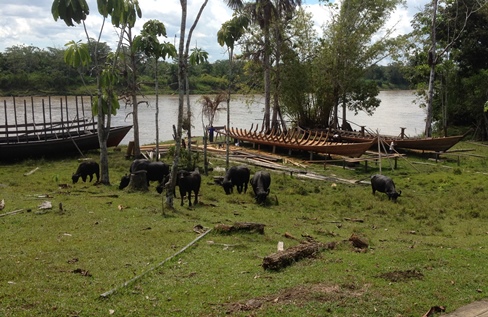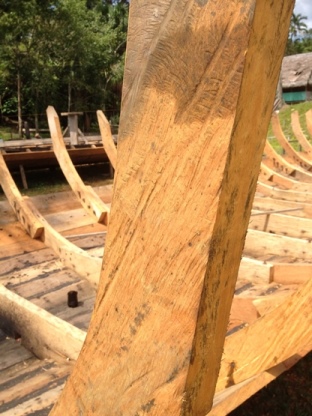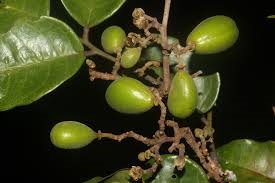 Near a place called Tamshiyacu, I visited with Pablo del Aguila, boat builder and master of all things wood floating in the upper Amazon.
Near a place called Tamshiyacu, I visited with Pablo del Aguila, boat builder and master of all things wood floating in the upper Amazon.
I wanted to find out about the kinds of woods I should use in a future boat. Approaching Pablo’s home I saw three hulls in various stages of construction and sharing space with a herd of grazing water buffalo. I introduced myself to Sr. del Aguila and he in turn introduced me to his son who was managing a crew building one of the hulls.
We walked into the hull and I was surprised by the size of the construction. Huge cetaceous ribs towered over me. This construction was more barn than boat. I’d never seen hand-construction at this size.

One thing was familiar, though, the pale yellow tint of the big ribs—It had to be ana caspi that workhorse wood found in these regions. Sr. del Aguila confirmed my guess. It was ana caspi, Apuelia leiocarpa. I’ve used ana caspi before and it’s wonderful. It’s hard and tough, resistant to all that slimes and crawls, and its interlocking fibers will hold a steel spike with a thousand gripping fingers. And Pablo del Aguila was building entire boats with the stuff. I asked him where he found that amount of ana caspi and he only smiled and said it’s around (He earns his name Paul the Eagle).
Pablo knows ana caspi has long disappeared from the banks of the Amazon. To find this wood one waits for the high water season, travels miles up small creeks, then walks miles more in hundred-degree heat and to a small stand of ana caspi. All the while carrying provisions, fuel, and chainsaws. Mother Nature and Charles Darwin have conspired to design an annoyingly efficient seed dispersal system with ana caspi—you never find large stands of the wood, but scattered in small groves. If you’re lucky the wished for tree is found, dropped, and the chainsaw man, a motoserrista, mounts the trunk and slices the giant into planks. Walking on the trunk he maneuvers the chainsaw into ever deepening grooves which free up the boards. Amazingly, a motoserrista with a good eye can slice lumber to a fraction of an inch. With the boards cut, a crew from a nearby village carries the lumber back to the boat then down the creek to the Amazon and Pablo’s boatyard. There expert hands the finish the lumber and ready it for the boat under construction.
Although ana caspi is disappearing from along the big rivers it not considered an endangered species and remains off the CITES list. I use ana caspi in my boats, but I’m always reluctant to go into the jungle find a good tree and cut it out. First of all the question of identifying ana caspi. Trees here are hard to identify. Unlike the maple leaf on the Canadian flag, or the familiar lobes of oak leaves, in Rainforest Peru the trees have—well, leaves that are green, oval, are on trees that are huge, and that have smooth gray bark, but maybe not.

Apuelia leiocarpa roughly translates as smooth, bottle-like fruit. You get the idea from the above photo from Kew Gardens. If I’m luckly enough to find the fruit from ana caspi on the ground I might identify the tree, otherwise I go to a sawmill and hope for the best.
Another question is who owns the tree that falls in the forest? Is it the government, a private owner, a village, or some guy that says it’s his tree? Again, it’s back to the sawmill. Or use the expert advice of a good man like Pablo del Aguila.
